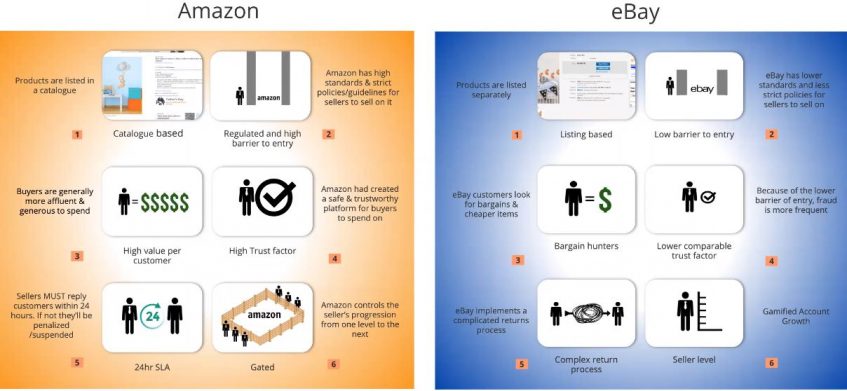
Practical Tips for Sellers on Global Marketplaces
Looking to start or grow an eCommerce business? You’ll probably need to think about different strategic approaches and many marketplaces provide platforms to help you reach a much broader global market than you might be able to do on your own.


We’ve compiled a list of practical tips for sellers based on a recent webinar we held with Commission Factory, featuring Joachim (Jo) Sebastian, Payoneer Brand Ambassador for Malaysia and Managing Director of Everpeaks. While the webinar was focused mostly on Malaysian sellers, these tips are applicable to sellers worldwide. Let’s take a look…
Take a Strategic Approach
So, where do you start? Yes, opening your first eCommerce business can be overwhelming, so we’ve gathered some basic ideas which you should think about.
- Brand building: Start by selling and building your own brand vs. being a reseller
- Localization: Products and any descriptions need to be localized to the buyers’ markets
- Diversification: While direct selling may have lower margins, taking a diversified approach by selling on at least two different marketplaces can net you greater returns
- Market testing: Test the market by shipping small amounts of your products to the marketplaces, until you know what actually sells
- Customization: This can be a key differentiator for your product, attracting customers to buy from you vs. your competitors
Focus on Operational Excellence
It can be difficult to keep up with ever-changing platforms, markets and legislation. Given the frequent rate of change, it’s close to impossible for sellers to be on top of everything at all times. Sellers should focus on operational excellence and making sure the consumer has the best experience from end to end.
Being competent in all these areas will help you convert leads to sales, and retain customers once they’ve purchased from you.
- Keywords — Positioning your brand ideally with the correct keywords can get your brand in front of more potential customers – research what works for each marketplace
- Platform gamification – Each platform has gamification strategies that you can use to your advantage
- Issue resolution – Understand communication channels and the best ways to resolve issues and answer questions
- Automation — Automate your processes as much as you can, to save yourself and your customers time, and lower the risk of manual error
Keep on Top of Logistics
Being customer-centric means keeping on top of every logistics detail, from proper packing and shipping to taxes, tracking, setting realistic timeframes for arrival, and of course communications.


Here are some key tips:
- Invest in a reliable and trackable logistics partner
- Deliveries must be consistent to keep customer satisfaction and retention rates high
- Keep returns at a minimum to maintain a good bottom line
- Invest in a pickup service for your products to be shipped out
- Be aware of relevant export taxes and duties, and how to manage them
Try Sponsored Listings
Sponsored listings are conventional traditional methods for getting traffic — you pay for advertising within the platform with the aim of generating sales. In the webinar, Jo mentions that advertising helps overcome the gated element of marketplace platforms. “As a new seller, you have to advertise,” he explains. “I have seen significant volume from paid advertising that leads to organic traffic in the future. If they are not aware of your product they cannot buy the product or leave reviews, which in turn, drive organic traffic.”
Understand Your Marketplace Platforms
Some common operational areas of focus may vary from marketplace to marketplace. For example, commonly-searched keywords on Amazon may be different from those on eBay. To operate efficiently, you’ll need to understand how each marketplace you’re using works. This will help you target potential customers with the right products, positioning, messaging and pricing.
This comparison, as shown in the webinar, illustrates some of the key differences between Amazon and eBay:


Don’t Go at it Alone
But what about transitioning customers from buying via marketplaces to buying direct from seller sites? The risk is lower and profits are higher when you sell on your own site — but the drawback is that you’re unlikely to get the amount of exposure as you would through a marketplace. The benefit of marketplace selling is that customers are purchase-ready. Even if they’re browsing, ultimately, they are on that site to buy.
Jo strongly believes that retailers should never just go at it alone. When asked about transitioning, he responded, “Marketplaces allow for brand representation — they are effectively an extension of the brand. If a consumer sees a product on your site, they will go to the trusted platforms they have shopped with to compare on other marketplaces, and if you are not present, you are missing out on a sale.”
He also warned that not selling on a marketplace means losing the opportunity for brand exposure and sales. Instead, he recommends putting time and effort into optimizing marketplace presence and finding the most competent operations team possible.
“It is worth investing in making sure you are set up to service your consumers operationally,” Jo said. “Using a third-party company to manage or advise you on how to approach marketplaces can save you two to three months and get you up to speed sooner.”
Global Payments for Global Business
If you’re a seller operating on international marketplaces, you have to think about maximizing profits — which includes international payment methods. This includes pricing, minimizing fees when you get paid, determining when you make payments to any suppliers you may have and ensuring they get paid in their own currency to save on exchange and transfer fees.
Payoneer, a leading cross-border payments solution used by enterprise businesses, sellers, freelancers and affiliates worldwide is a great example. With Payoneer, you can get paid by the world’s leading eCommerce marketplaces, pay your suppliers and contractors, pay VAT for free, and manage multiple stores in one place. Payoneer also allows you to finance the next stage of your business growth with instant working capital available at low rates.
Ready to grow your business? Watch the recorded webinar to learn more on how to succeed on global marketplaces.




